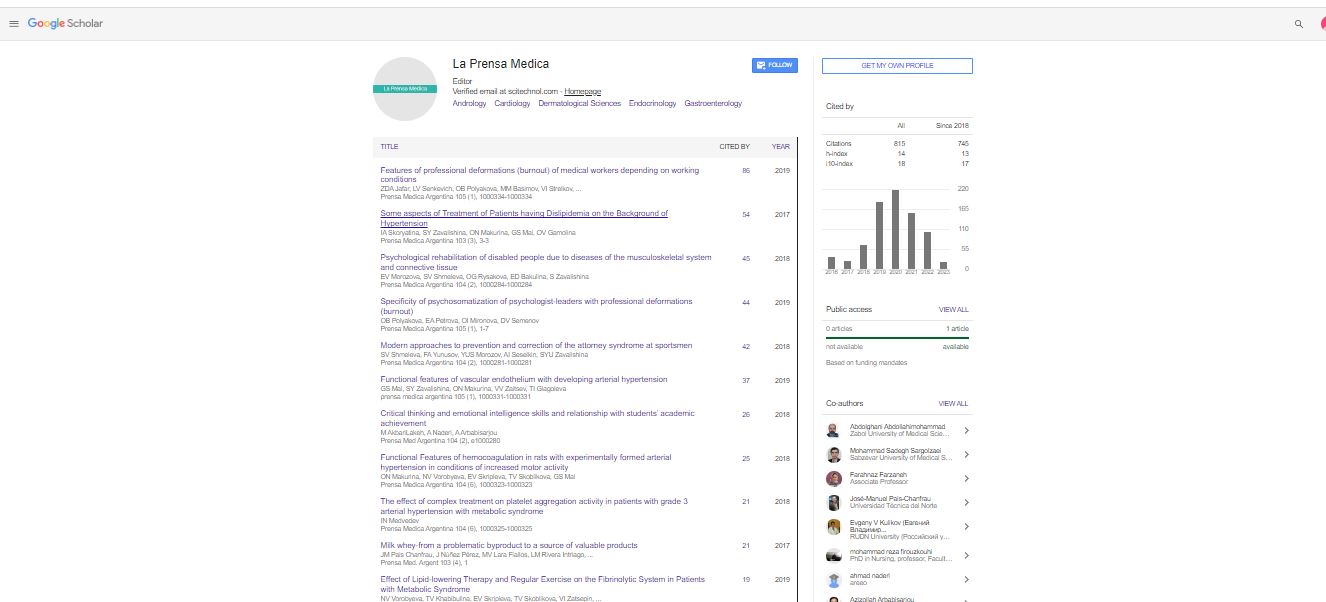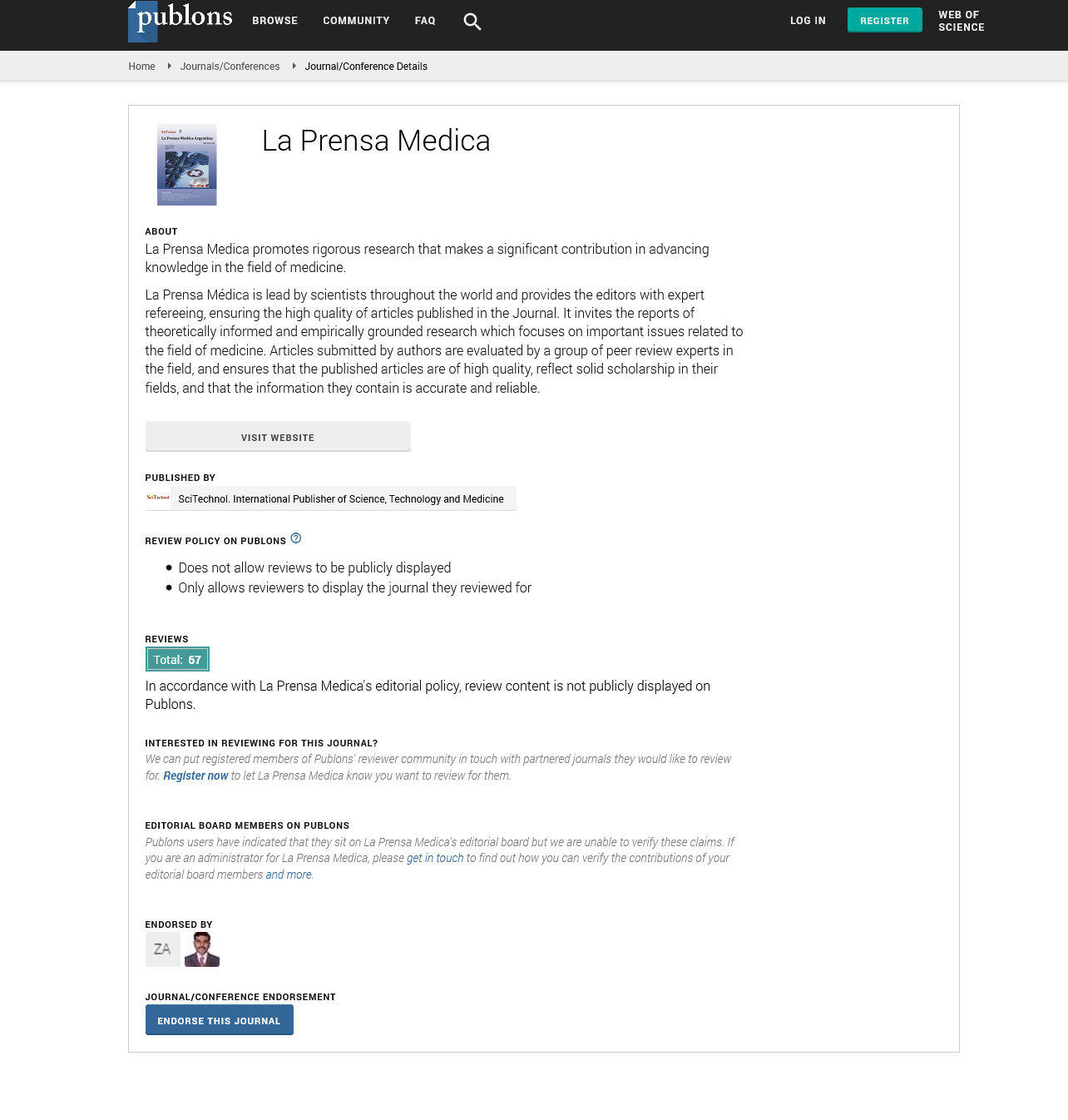Perspective, La Prensa Medica Vol: 109 Issue: 4
Investigating Naegleria fowleri and its Devastating Effects
Abbas Dagci*
1Department of Parasitology, Tokat Gaziosmanpasa University Medical School, Tokat, Turkey
*Corresponding Author: Abbas Dagci,
Department of Parasitology, Tokat
Gaziosmanpasa University Medical School, Tokat, Turkey
E-mail: dg.ab@gop1.edu.tr
Received date: 30 October, 2023, Manuscript No. LPMA-23-111729;
Editor assigned date: 01 November, 2023, PreQC No. LPMA-23-111729 (PQ);
Reviewed date: 16 November, 2023, QC No. LPMA-23-111729;
Revised date: 23 November, 2023, Manuscript No. LPMA-23-111729 (R);
Published date: 30 November 2023, DOI: 10.4172/2324-8955.1000676
Citation: Dagci A (2023) Investigating Naegleria fowleri and its Devastating Effects. La Prensa Medica 109:4.
Abstract
In the micro-world of microbial threats, few evoke as much dread as Naegleria fowleri, the brain-eating amoeba. This microscopic organism, found in warm freshwater environments, has the potential to cause a rare but highly lethal infection called Primary Amoebic Meningoencephalitis (PAM).
Description
In the micro-world of microbial threats, few evoke as much dread as Naegleria fowleri, the brain-eating amoeba. This microscopic organism, found in warm freshwater environments, has the potential to cause a rare but highly lethal infection called Primary Amoebic Meningoencephalitis (PAM). As researchers delve into the intricacies of this deadly pathogen, the aim is to not only understand its biology but also develop effective strategies to mitigate its devastating effects.
The intricate path of infection
Naegleria fowleri thrives in warm, stagnant water bodies such as lakes, ponds, and hot springs. It's during recreational water activities like swimming, diving, or even using contaminated tap water for nasal irrigation that individuals unknowingly expose themselves to this amoeba. Once inhaled through the nose, Naegleria fowleri finds its way to the brain through the olfactory nerve, where it triggers a cascade of events leading to PAM.
The journey of Naegleria fowleri from the nasal passage to the brain marks the beginning of PAM- a condition that progresses rapidly and mercilessly. Initial symptoms, often resembling those of bacterial meningitis, include headache, fever, nausea, and vomiting. However, as the amoeba continues its destructive path, patients soon experience severe neurological symptoms such as seizures, altered mental state, and hallucinations. The infection's swift progression often leaves healthcare professionals with a narrow window for intervention.
The journey of Naegleria fowleri from the nasal passage to the brain marks the beginning of PAM- a condition that progresses rapidly and mercilessly. Initial symptoms, often resembling those of bacterial meningitis, include headache, fever, nausea, and vomiting. However, as the amoeba continues its destructive path, patients soon experience severe neurological symptoms such as seizures, altered mental state, and hallucinations. The infection's swift progression often leaves healthcare professionals with a narrow window for intervention.
Understanding the amoeba's tactics
To combat the devastating effects of Naegleria fowleri, scientists have been diligently studying its biology and mechanisms of infection. The amoeba's ability to transform from a dormant cyst stage to a highly active trophozoite stage is a critical aspect of its pathogenicity. This transformation grants it the power to penetrate the nasal mucosa and travel along the olfactory nerve to reach the brain.
Decoding the immune response
The human immune system is designed to defend against microbial invaders, but Naegleria fowleri exploits its quick journey to the brain to evade immune detection. The amoeba's swift progression leaves the immune response struggling to mount an effective defense. In recent years, researchers have made strides in understanding the complex interactions between the amoeba and the immune system, which could potentially inform the development of targeted therapies.
Hope amidst the challenge
Though PAM remains a rare infection, with only a few reported cases each year, the high mortality rate associated with it underscores the need for effective treatments. Current approaches involve administering antifungal medications and experimental drugs, but their success rate remains limited due to the advanced stage of infection when most cases are diagnosed.
Towards prevention and education
As the saying goes, prevention is better than cure. Efforts to curb the spread of Naegleria fowleri focus on public awareness and education. People are encouraged to take precautions when engaging in water-related activities, such as using nose clips or holding their noses shut when diving or jumping into freshwater bodies. Furthermore, improving water treatment processes to eliminate or reduce the presence of Naegleria fowleri is a critical step in minimizing its threat.
Conclusion
The battle against Naegleria fowleri and its devastating effects is multifaceted. While research continues to shed light on the amoeba's biology and the immune response it triggers, the development of effective treatments remains a challenge. As understanding deepens, there's hope that targeted therapies could emerge to halt the progression of PAM and increase the chances of survival. Investigating Naegleria fowleri and comprehending its devastating effects is a critical pursuit in the set of infectious diseases. From its intricate path of infection to the swift onslaught of PAM, this braineating amoeba leaves little room for intervention. However, as our understanding of its biology and interactions with the human body improves, there's potential for breakthroughs that could shift the balance in favour of the infected. Alongside scientific efforts, public education and preventive measures will play a pivotal role in minimizing the risks associated with this rare but deadly pathogen.
 Spanish
Spanish  Chinese
Chinese  Russian
Russian  German
German  French
French  Japanese
Japanese  Portuguese
Portuguese  Hindi
Hindi 

